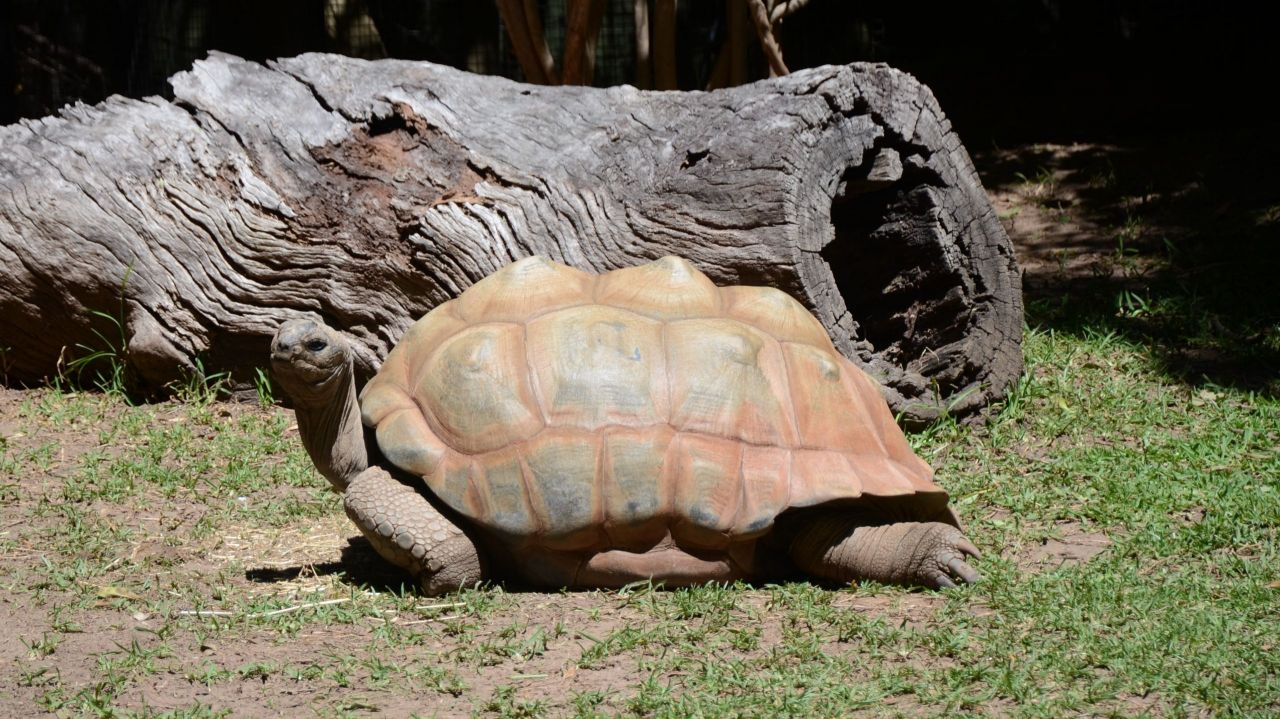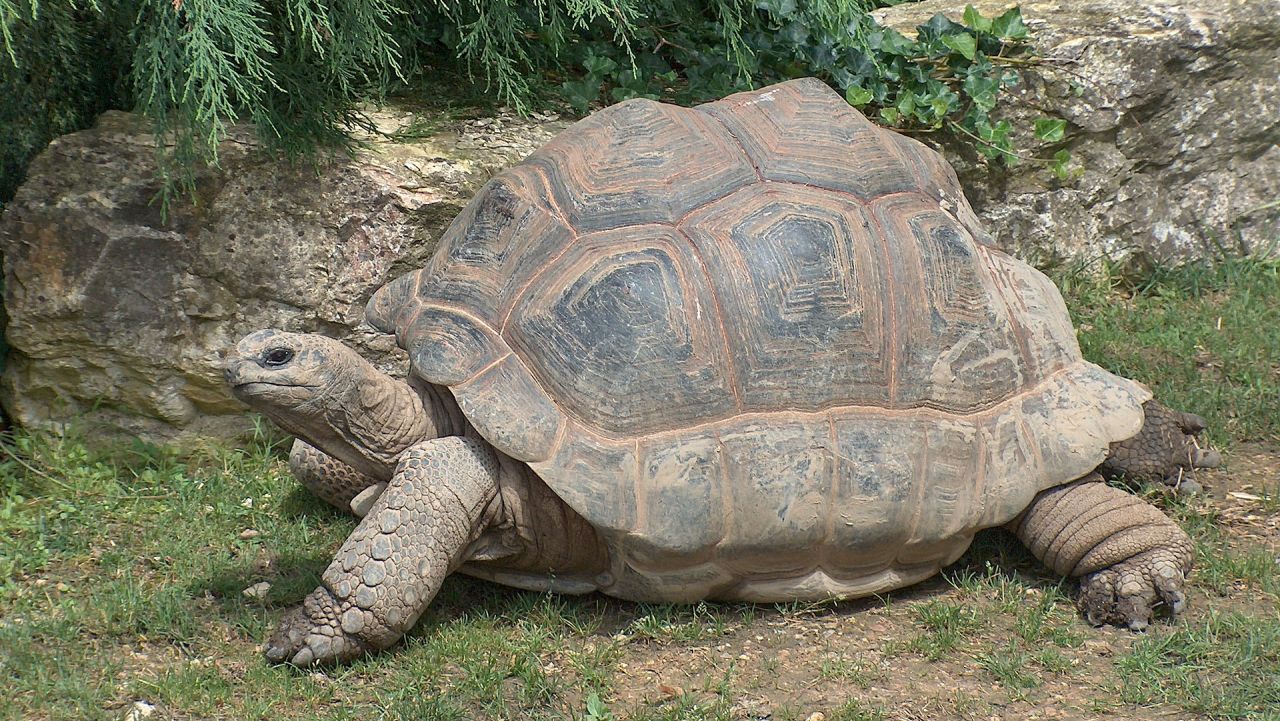
Aldabra Tortoise(Geochelone gigantea): One of the world’s largest land tortoises.
Kingdom: | Animalia
Phylum: | Chordata
Class: | Reptilia
Order: | Testudines
Family: | Testudinidae
Genus: | Geochelone
Species: | G. gigantea
Size and Weight:
Aldabra tortoises are one of the world’s largest land tortoises, weighing up to 550 pounds. Males are larger than females and have longer, thicker tails. Males can weigh up to 550 pounds and their carapace can measure 4 feet in length. Females can weigh up to 350 pounds with a carapace up to 3 feet long. The largest free-roaming tortoise ever recorded was an Aldabra tortoise weighing 672 pounds.
Appearance:
These large tortoises range in color from dark gray to black. Their upper shell, called a carapace, is highly domed and thick, with a smaller neck plate than is typical among giant tortoises. They have very long necks to aid in food gathering. Their legs are short and thick, often covered with bony scales. Their heads are relatively small, pointed and covered by scales.

Diet:
Aldabra tortoises are grazers and browsers, consuming mainly grasses, woody plants and other vegetation. But they are opportunistic feeders and will feed on meat when available. They will even eat feces and the carcasses of dead tortoises.
Habitat:
Their habitat includes scrub, mangrove swamps and coastal dunes. Their home, Aldabra Island, is a coral atoll composed of jagged and pitted reef limestone with small beaches surrounding a large mangrove-bordered lagoon.
Geography:
These tortoises are found on Aldabra Island, one of the Seychelles northeast of Madagascar in the Indian Ocean.

Breeding:
Breeding season occurs between February and May. In courting, the male batters his shell against the female a dozen or more times. The male makes a deep trumpeting call when mating. The female carries her eggs for about ten weeks and then buries them in the ground. The clutch size ranges from nine to 25 eggs, each about the size of a tennis ball. Only three to five viable young are produced from a clutch. Females may nest twice in one season.
Social Structure:
Aldabras are one of the more social tortoise species. Males often fight with one another for breeding rights and territory.
Lifespan:
These giant tortoises can live to be more than 150 years old.
Threats:
Aldabra tortoises are the remnants of a larger population of land tortoises from the Indian Ocean region, formerly home to 18 or more varieties of tortoise. With the exception of the Aldabra, all other species were driven to extinction through a combination of hunting by sailors and predation of eggs and hatchlings by introduced species such as rats, cats and pigs. Aldabra tortoises are now listed as vulnerable, after years of human poaching and encroachment.
Conservation Status:
Aldabra tortoises are listed as “Vulnerable” by the IUCN Red List of Threatened Species.
Conservation Efforts:
The Aldabra tortoise was one of the first species to be protected. Charles Darwin and other notable conservationists of the late 1800s, working with the governor of Mauritius, set aside a captive breeding population. In 1981 the Republic of Seychelles established a permanent nature reserve on the Aldabra atoll, and the following year Aldabra was named a UNESCO World Heritage Site.
Sources: Smithsonian’s National Zoo and Conservation Biology Institute.
